It was 4:50 a.m. when government minders woke us. They told us to dress up and be ready to leave the hotel immediately for a major event.
They didn’t say where we were going, what we would be doing or who would be there. In the past, a “major event” has meant being taken to see North Korea’s Supreme Leader, Kim Jong Un.
Monitors have said the country is “primed and ready” to conduct a sixth nuclear test. US President Donald Trump has been touting a “bonding” with Chinese President Xi Jinping that could perhaps see unified action against Pyongyang. A US Navy strike force is off the coast. And Saturday is the Day of the Sun here, the birthday of the country’s founder Kim Il Sung. It’s the most important national holiday for North Korea and a day when the regime likes to show off.
As ever in North Korea, there was no concrete way to know where we were going or what we would see. Even the minders said they had no idea.
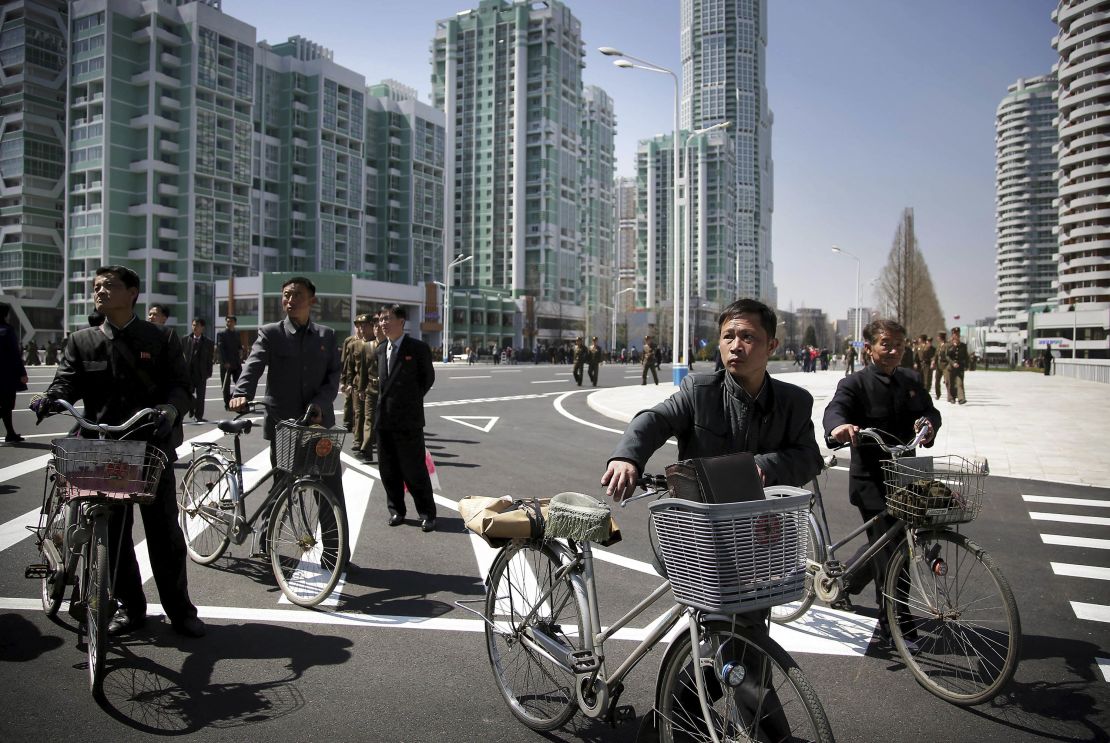
So we did what we were told and filed onto the buses.
It was clearly going to be a big event. Scores of international journalists had been flown to the capital to join us. It took hours to pass through security.
And then we reached our destination.
READ: Trump’s saber-rattling is North Korea’s propaganda dream come true
Not a missile launch site or research facility, but a housing estate.
Now that might sound like a letdown, but this too was a display of force.
Defying sanctions
The development, called Ryomyong Street, is a mammoth project of 3,600 flats and various high rises, the tallest topping out at 70 stories.
Pyongyang’s latest addition to its skyline has risen in spite of sanctions. You might almost say the buildings were erected because of them.
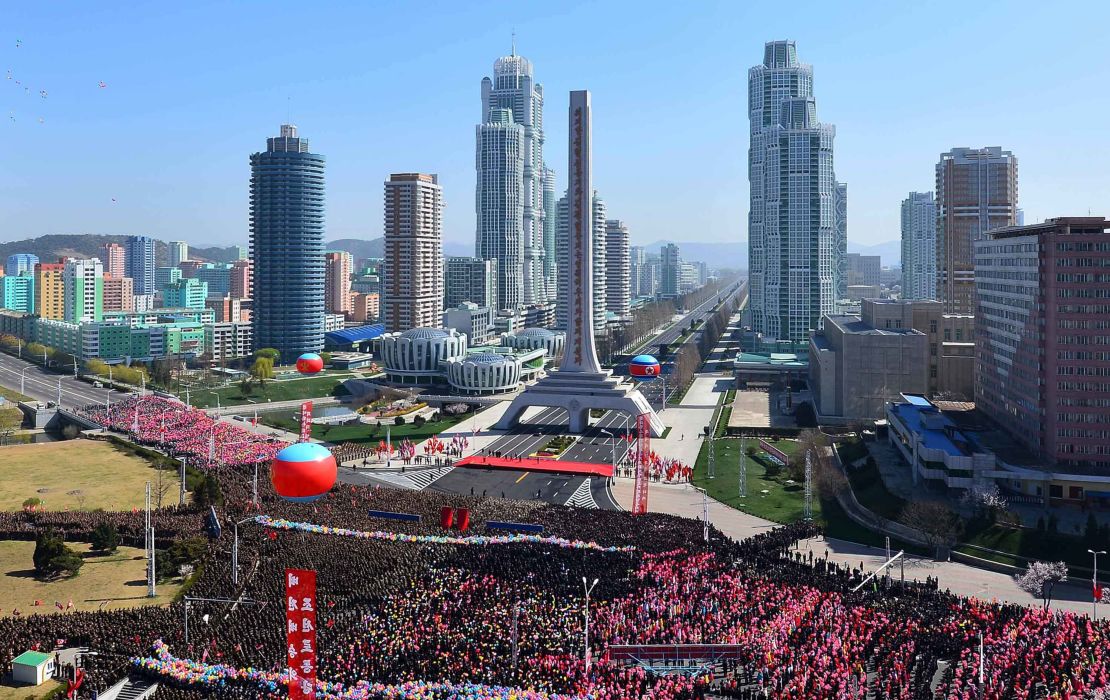
Kim Jong Un first announced the construction of Ryomyong Street a little over a year ago.
The country had just conducted its fourth nuclear test and was subsequently slapped with a new round of economic sanctions that would have made construction more difficult.
So this was always more than just a building project. It was a message of defiance from North Korea to the world.

Construction has always been a symbolic tool for the Kim family.
During the 1960s, Kim Il Sung oversaw the reconstruction of Pyongyang after the devastation of American bombing in the Korean War.
When his son Kim Jong Il came on the scene, he added the iconic arches, towers and statues – monuments to glorify the regime, the party and its leadership, the type of imagery that Pyongyang is so famous for.
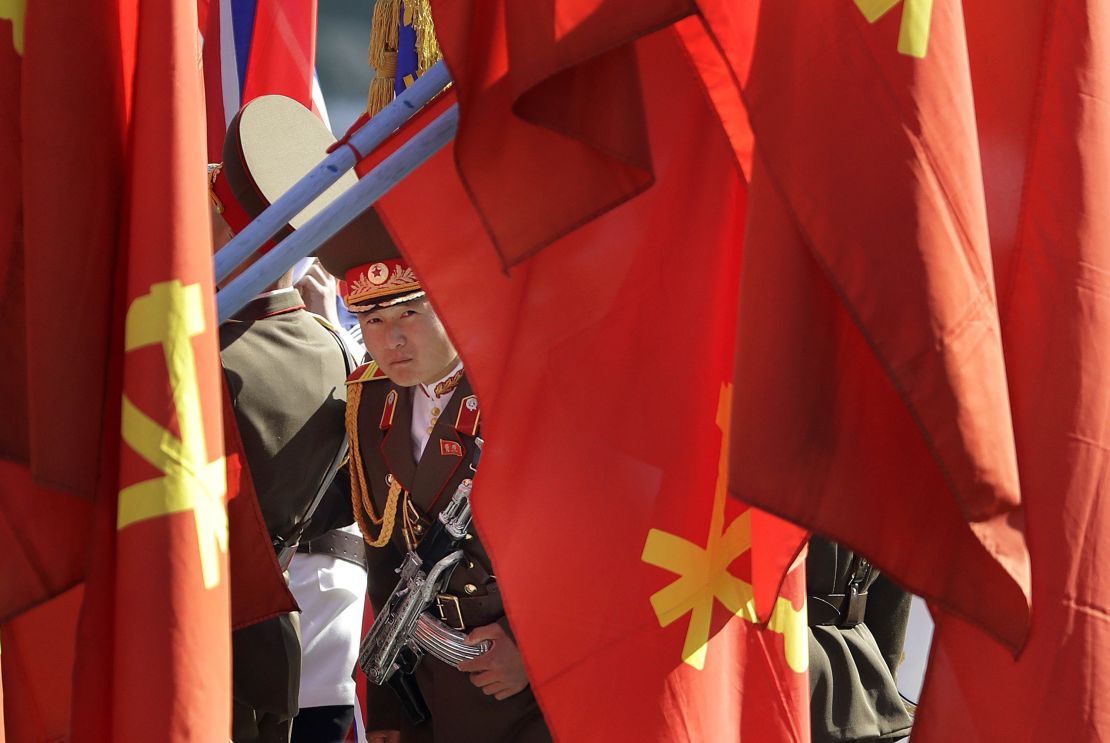
When grandson Kim Jong Un’s project was announced, state media quoted the Supreme Leader as saying it was “a political occasion clearly showing the spirit of the DPRK standing up and keeping up with the world, despite all sorts of sanctions and pressure by US imperialists and their followers.”
This was the “major event” we had been promised, just as important as the nuclear program.
And North Korea put on a show.
Conjuring a crowd
As we arrived at the entrance, soldiers were walking along the deserted avenues, finishing up a meticulous sweep. They looked under every bush, every ledge, at every inch of road and sidewalk.
Then tens of thousands of people began pouring in: civilians, residents and soldiers who had been working around the clock to complete the project.
It’s a remarkable sight to witness the flood of people that can be conjured up, as if from nowhere, in this city.

Many in the crowd carried pastel-colored balloons on the sunny spring day. There were also many of the soldiers who had been deployed to build this project and get it finished by April 15, Kim Il Sung’s birthday.
From the outside, the buildings on Ryomyong Street are undeniably impressive. They appear modern and many are equipped with solar panels. We were not able to see what they were like inside.
Flowerpots were in many windows, but the buildings are still unoccupied, the shops and other facilities mostly unopened. We have no way of knowing how much was spent on this showpiece project or the difference the same resources could have made to poorer parts of the country, places North Korea doesn’t allow foreigners to see.
On a stage, the leadership of the Workers’ Party lined up. Soldiers stood to attention. Massive flags flapped in the breeze.
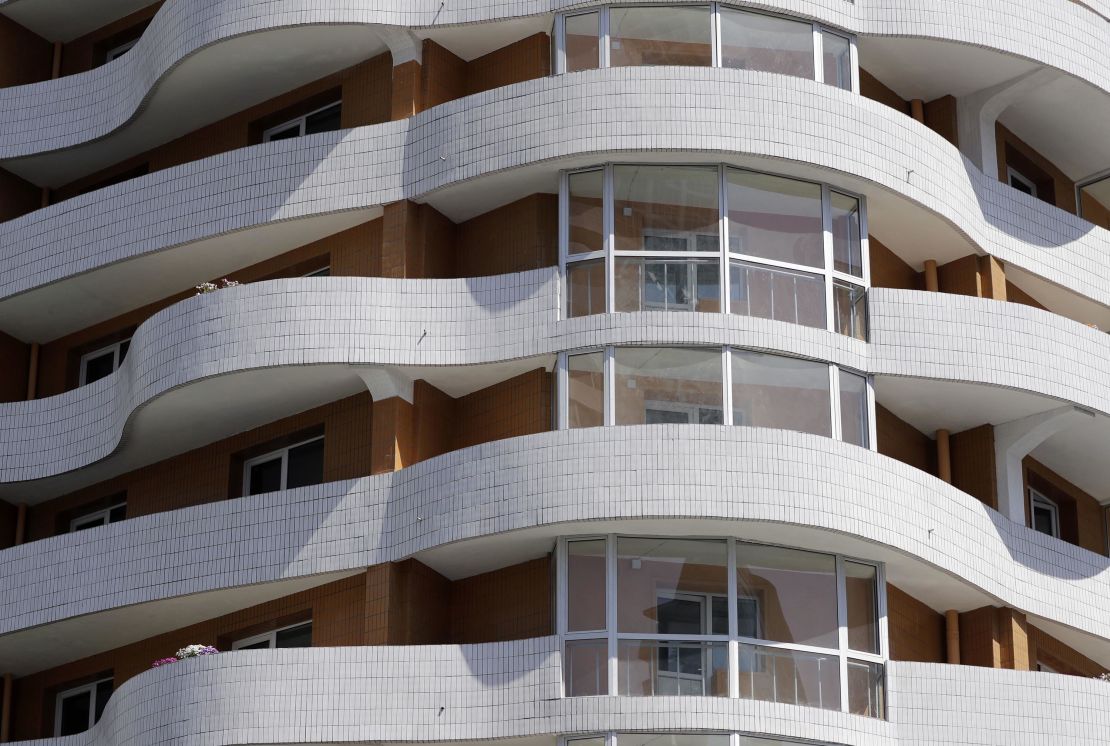
And then, the military band struck up the familiar, rousing tune that heralds the arrival of Kim Jong Un.
At last, it was the moment everyone was waiting for. We were going to see the leader.
‘As important as 100 bombs’
The crowd went wild, cheering and clapping. Kim appeared, looking relaxed and confident, often standing with his hands behind his back and applauding on cue.
His public persona is serious and somewhat nonchalant, especially when compared with the frenzied adulation that surrounds him.
North Korea’s Prime Minister, Pak Pong Ju, spoke with patriotic fervor about the newly completed construction project.
He said Kim himself had personally inspected the site many times, offered field guidance, and ensured it was given all available resources, despite devastating floods in the northern Hamgyong Province in late 2016 that halted work as soldiers scrambled to rebuild washed-out homes.

The Prime Minister also said the completion of the project was just as important as if North Korea had “dropped a hundred nuclear bombs” – asserting that North Korea is just as dedicated to growing its economy and living standards as it is to growing its nuclear and missile capabilities.
Kim, himself, did not speak.
He stepped up to cut the red ribbon to open his latest triumph. Balloons were released into the air and the cheering grew louder.
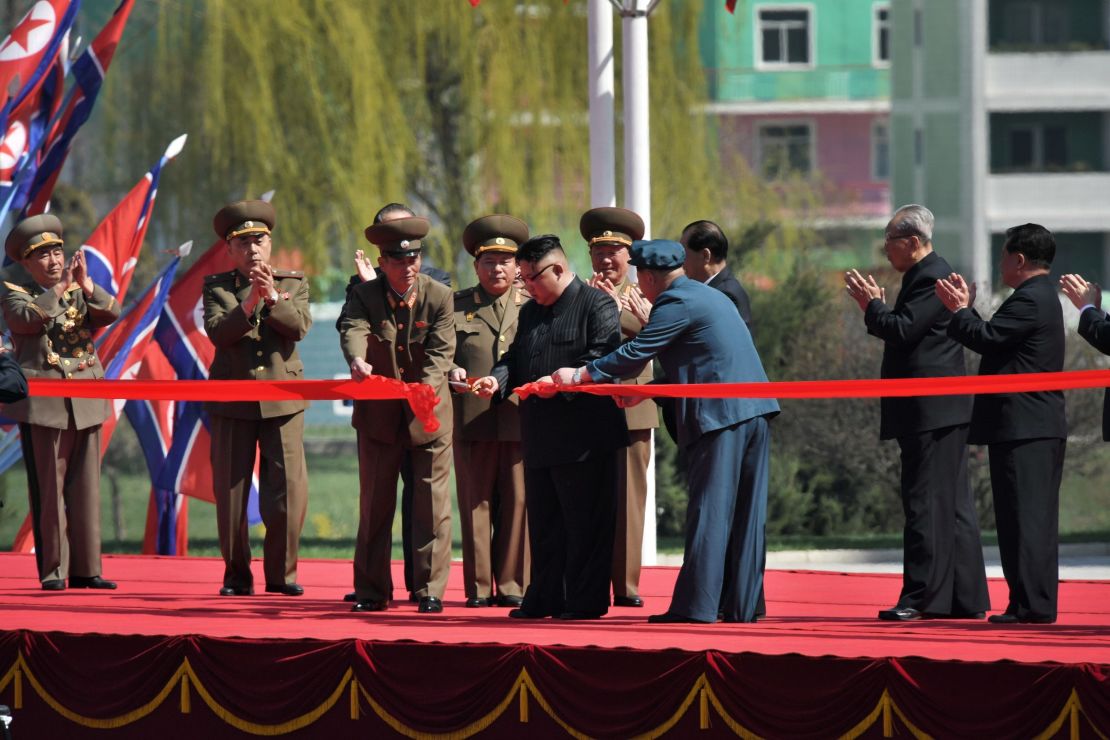
Then he turned, and walked back to his black Mercedes limousine, driving off without a word to the waiting crowds.
READ: Opinion – Trump vs. Kim: A fight the US President can’t win
After he disappeared from view, the streets fell absolutely, eerily silent for several minutes. Then, as if a spell had been broken, the hubbub returned and everyone started to leave.
The soldiers marched away, some singing patriotic songs, many seeming in awe of the shiny new capital they have been building, a stark contrast from the villages and towns where they’re from.
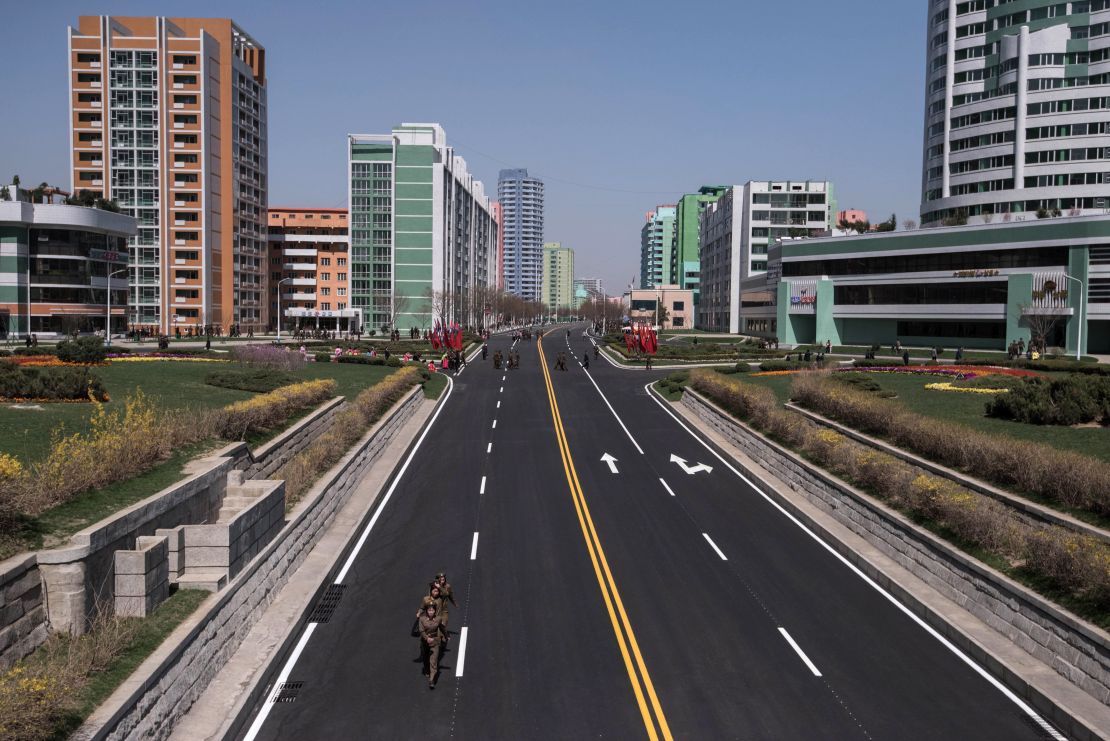
The crowds left, thousands walking down the same street. Perhaps some of the civilians will get to live in this new addition to the skyline. The soldiers will probably be deployed to another building site.
With Kim in control, it appears a new wave of construction is sweeping across the capital, one he hopes will transform Pyongyang into an era of modernity despite years of heavy economic sanctions and isolation.
Who knows when – or if – the rest of the country will follow.





